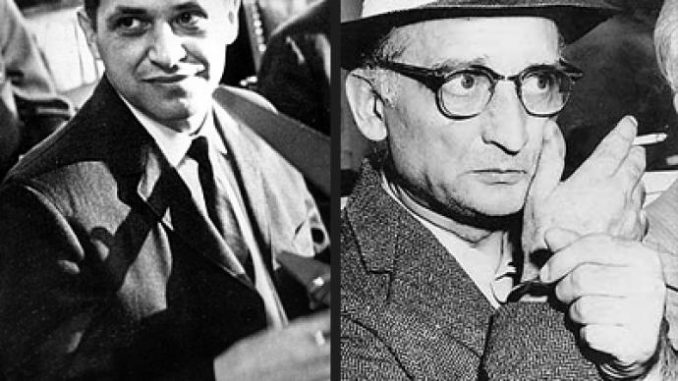
On This Day, February 10th, 1962 – Francis Gary Powers, an American who was shot down over the Soviet Union while flying a CIA spy plane in 1960, is released by the Soviets in exchange for the U.S. release of a Russian spy. The exchange concluded one of the most dramatic episodes of the Cold War.
Powers had been a pilot of one of the high altitude U-2 spy planes developed by the United States in the late-1950s. Supposedly invulnerable to any Soviet antiaircraft defense, the U-2s flew numerous missions over Russia, photographing military installations. On May 1, 1960, Powers’ U-2 was shot down by a Soviet missile. Although Powers was supposed to engage the plane’s self-destruct system (and commit suicide with poison furnished by the CIA), he and much of the plane were captured. The United States at first denied involvement with the flight, but had to admit that Powers was working for the U.S. government when the Soviets presented incontrovertible evidence. In retaliation, Soviet leader Nikita Khrushchev called off a scheduled summit with President Dwight D. Eisenhower.
Powers was put on trial, convicted of espionage, and sentenced to 10 years imprisonment. In February 1962, the Soviet Union announced that it was freeing Powers because of a petition from the prisoner’s family. American officials made it quite clear, however, that Abel was being exchanged for Powers—a spy-for-a-spy trade, not a humanitarian gesture on the part of the Soviet Union. The U.S. government announced that in exchange for Powers, it would release Col. Rudolf Abel, a Russian convicted of espionage in the United States. On February 10, Abel and Powers were brought to the Gilenicker Bridge that linked East and West Berlin for the exchange. After the men were successfully exchanged, Powers was flown back to the United States.
In an announcement, the Soviet Union declared that its release of Powers was partially motivated by “a desire to improve relations between the Soviet Union and the United States.” U.S. officials were cautious in evaluating the Soviet overture, but did note that the action could certainly help lessen Cold War tensions. The exchange was part of the ongoing diplomatic dance between Khrushchev and President John F. Kennedy. Both men seemed earnestly to desire better relations, and the February 1962 exchange was no doubt part of their efforts. Just a few months later, however, the Cuban Missile Crisis, in which the Soviets helped construct missile bases in Cuba, erased the memory of these diplomatic overtures and brought the two powers to the brink of nuclear conflict.


Be the first to comment